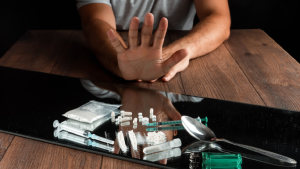Addiction is a vicious disease that permeates modern societies, whether it is an addiction to a drug or something more superficial. Still, it is a disease, and treating it is not often a one-time thing. Think of it like a sickness whose symptoms still remain after you have been ‘cured.’
Addiction doesn’t have a definitive cure because it can be difficult to define anything as a cure, because if someone is addicted to alcohol, for example, they can still have moments of alcohol abuse throughout their life after they have received proper treatment.
That is also the topic of discussion; a treatment program originally devised for victims of alcohol addiction and its effectiveness in doing so. The 12-step program, which was made in the early to mid-20th century by Alcoholics Anonymous groups, has been around for nearly a century, but how effective is it at what it’s meant to do? Let’s discuss that here, but before that, we have to understand the program itself.
Alcoholics Groups and the 12-Step Community Program
Alcoholics Anonymous (AA) is a support program to help alcoholic victims and enable them to help others as well. The 12-step program devised by AA enables victims to help each other, forming a community of assistance that acts as a support system they might not get elsewhere.
The community aspect of this 12-step program is crucial, as one of the foremost problems that addiction victims suffer from is social stigmatization, which can ultimately lead to destitution as being shunned only exacerbates and reinforces the negative effects of addiction.
The 12-step program helps develop a community around victims so that everyone understands that they are in the same boat because nobody can understand alcohol addiction better than someone who is addicted themselves.
The 12-step program is not set in stone either, but it’s meant to help yourself and help others.
- Admitting to yourself that the addiction is controlling you
- Believing in a higher power and their help (In God or any being you believe in)
- Giving yourself to that higher power
- Looking inward and ‘taking inventory of what we are, what we’ve done, what we’re doing to ourselves
- Admitting to yourself, the higher power or someone else about what you’ve done is wrong.
- Allowing the higher power to turn your wrongs around and make them right.
- Asking the higher power to remove your wrongs and shortcomings
- Making a list of what we’ve done wrong to others and be willing to make amends
- Contacting those we have wronged unless doing so makes the situation worse
- Continue the path towards taking personal inventory, get an idea of where we stand
- Seek prayer, meditation, or anything that would help us connect with a higher power
- Carry the message of this program to others in need
As it might be evident, the 12 steps are based on the belief in a higher power, and more often than not, that higher power is God. However, the program is designed in a way that it can be anything you believe as long as you understand what the program is all about.
Effectiveness Versus Success & the Nature of AA
When it comes to addictions or any treatments where symptoms of the disease can come back now and then, the term ‘success’ might not be the right one to use. For example, if someone takes the 12-step community program and is successfully sober for ten years but has a small relapse after that, it can become a problem to define it as a success.
There is also the underlying problem that AA is supposed to be anonymous, as the name suggests, and since alcohol abuse and recovery is a very long-term process, that data is not suited for gathering. The victims of alcohol abuse and addictions also rarely tend to admit to relapses, which is also where the 12-step program can be somewhat ineffective, as it heavily relies on the person’s own integrity. The program is also applied to a wide range of treatments for substance abuse, gambling, and many other types of addictions.
There has also been plenty of criticism regarding these 12 steps, in that it often removes a sense of personal responsibility from the individual suffering from addiction. Yes, addiction is a disease and not something you can just rid yourself of, but the 6th and 7th steps can feel strange to someone who doesn’t really believe in a higher power. However, it is noted that the program is spiritual rather than religious and that you are the only one who takes part in the spiritual aspects of it, making sure that it is not someone else’s spiritual understanding but your own that you inhabit.
How Can Recovery be Effective?
When looking to beat an addiction, such as cigarettes, many might go for an alternative. For example, someone who is addicted to cigarettes might go for a vape, citing that the vape is less damaging to your insides, even if it might contain the same or more nicotine—the addictive substance of a cigarette.
The thing that people tend to do is to seek the contentment they felt (albeit for a short while) with the substance they are addicted to, and the 12-step program is one that seeks to provide that contentment without an alternative substance.
Contented sobriety is the goal, where being sober from the addiction doesn’t feel worse because if it does, the chances of getting back to old habits can be high and even more dangerous.
According to American Addiction Centers, the effectiveness rate of this program is somewhere between 8-12%, but that is due to sobriety and addiction recovery being a difficult process. Many drop out after just a year, but those that do complete these 12 steps usually recover from it.
Conclusion
Addiction is a difficult disease to treat both for the victim and anyone helping them. The 12-step program is one treatment solution, but it can be said that it isn’t perfect. When followed, it is effective in combating addiction, but it is a difficult journey to go through, and it might need other ways to help the process along.













